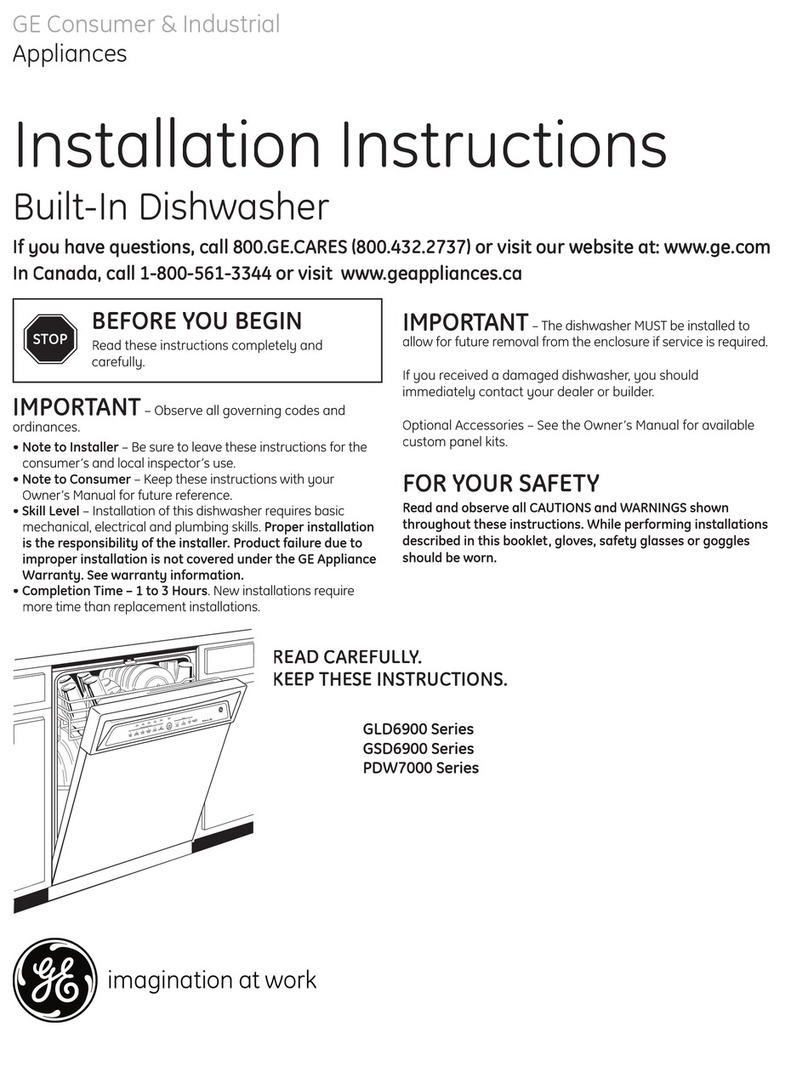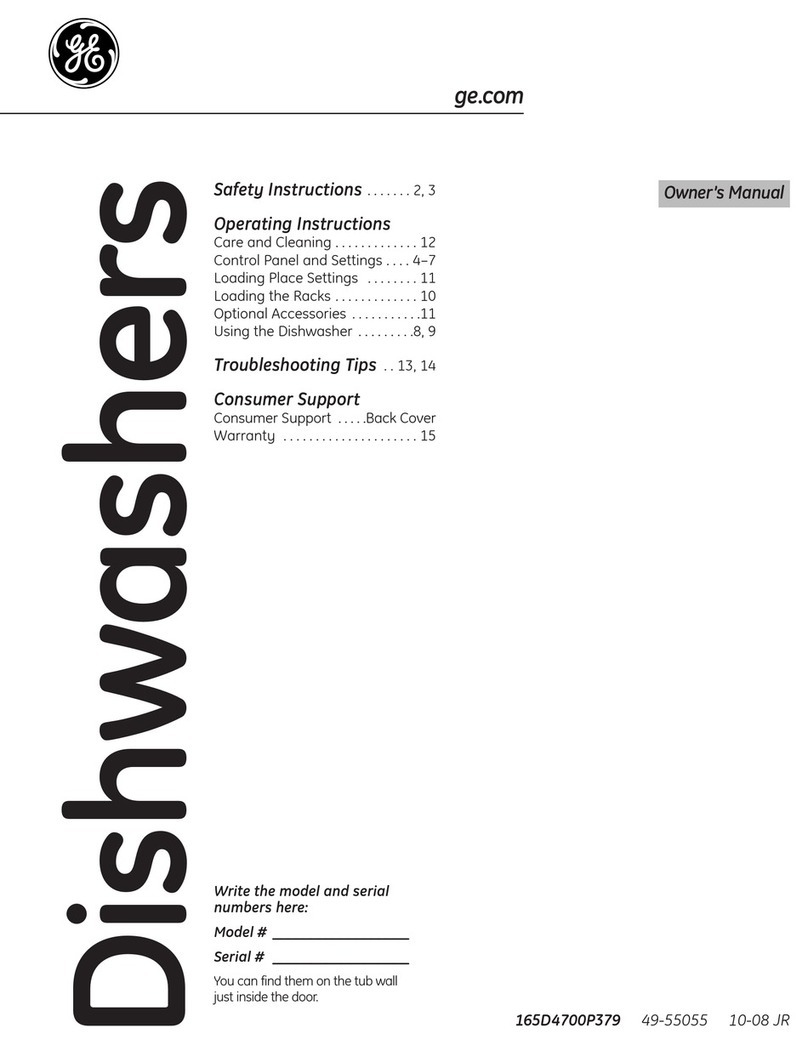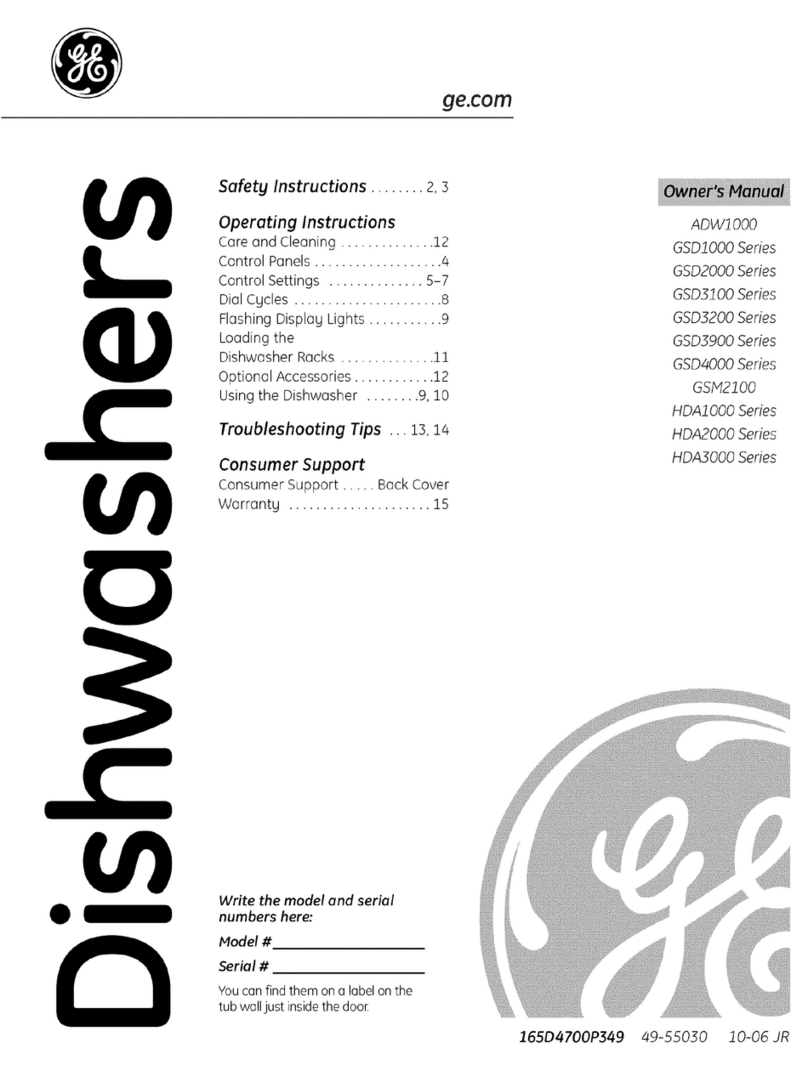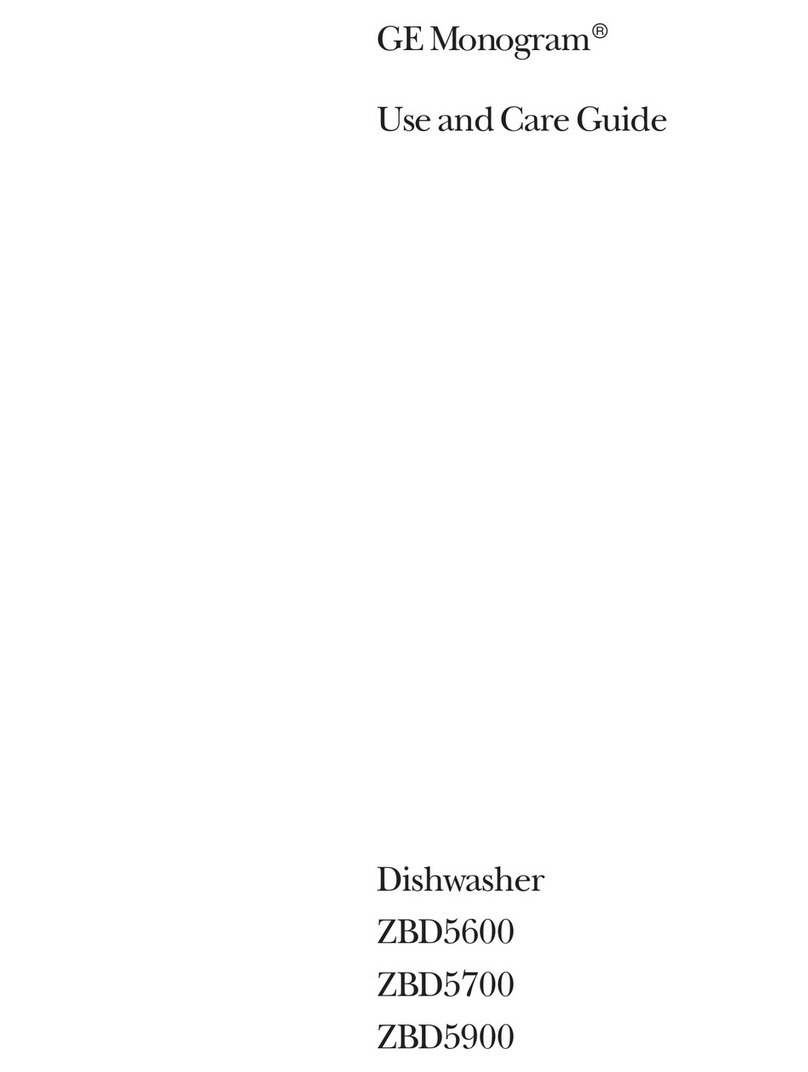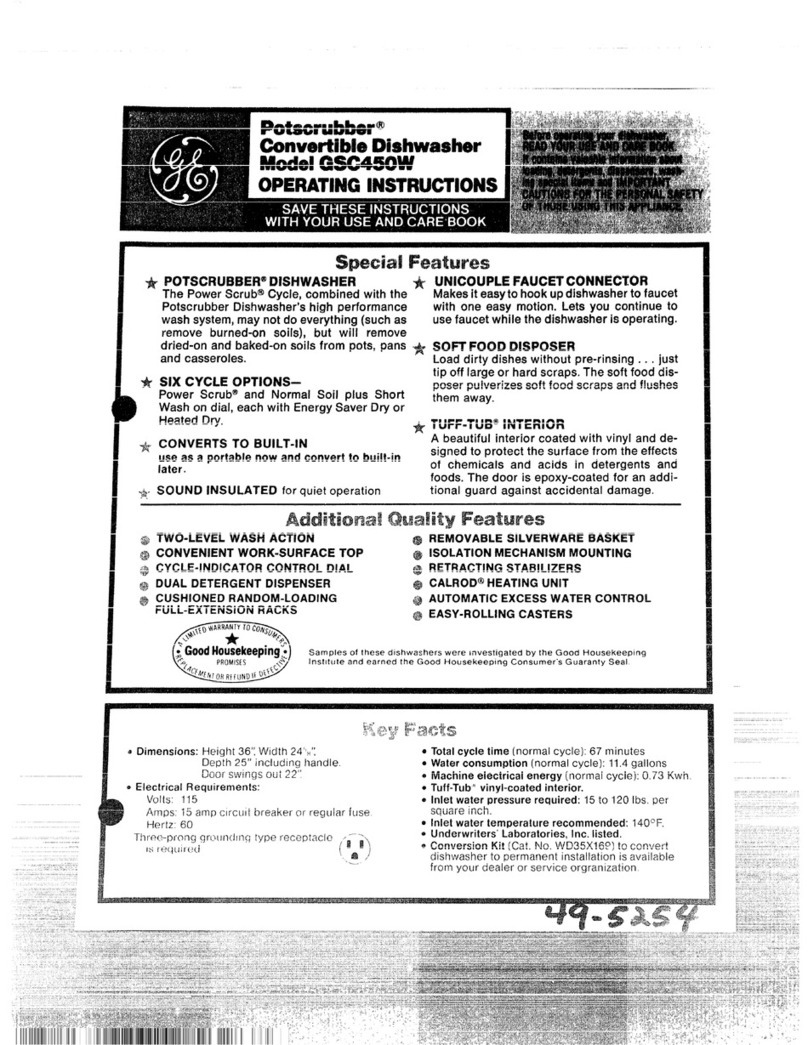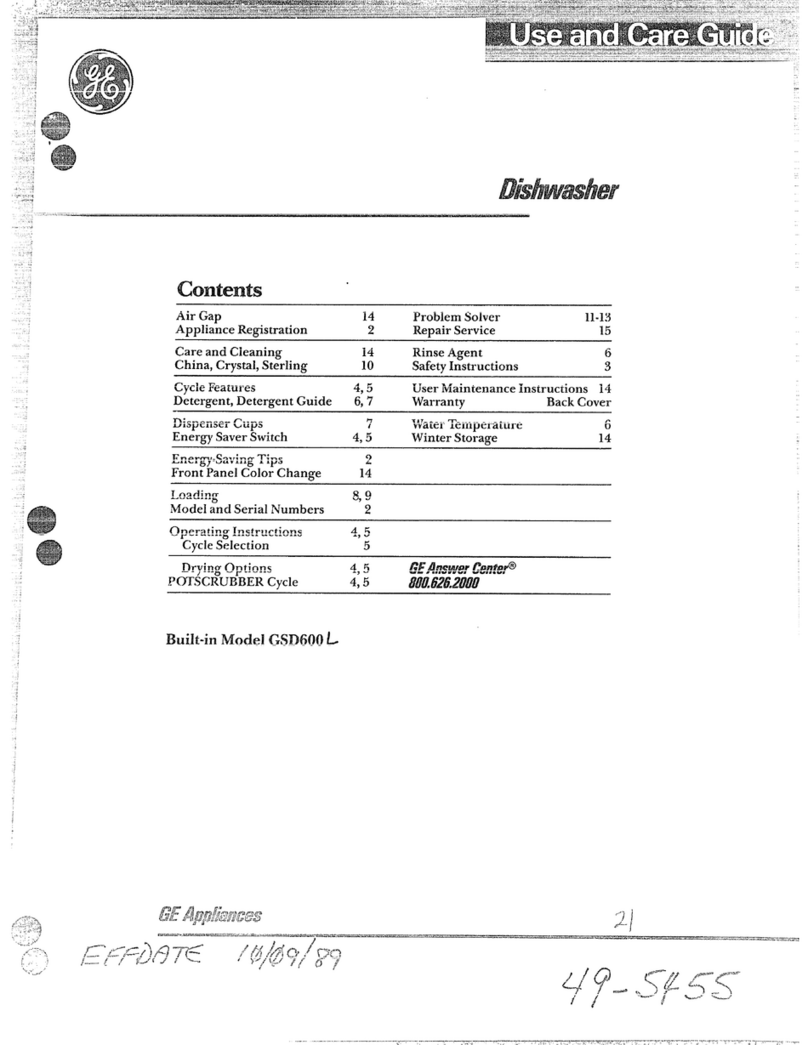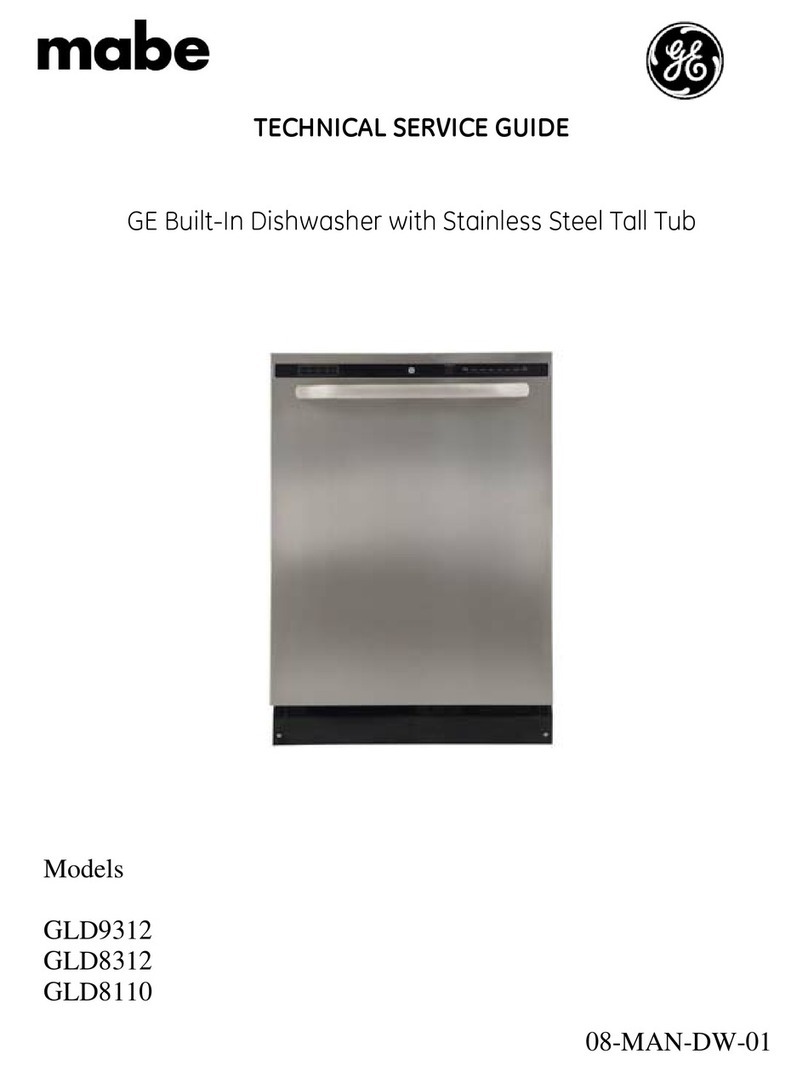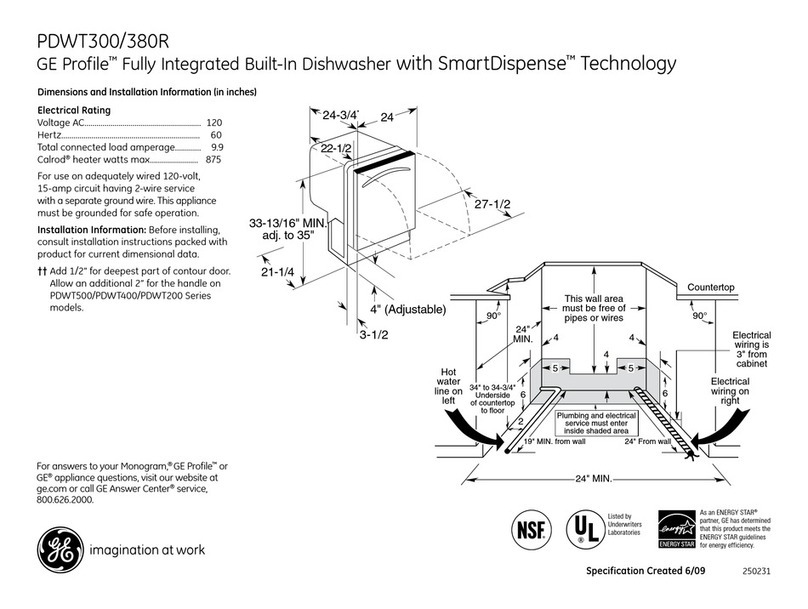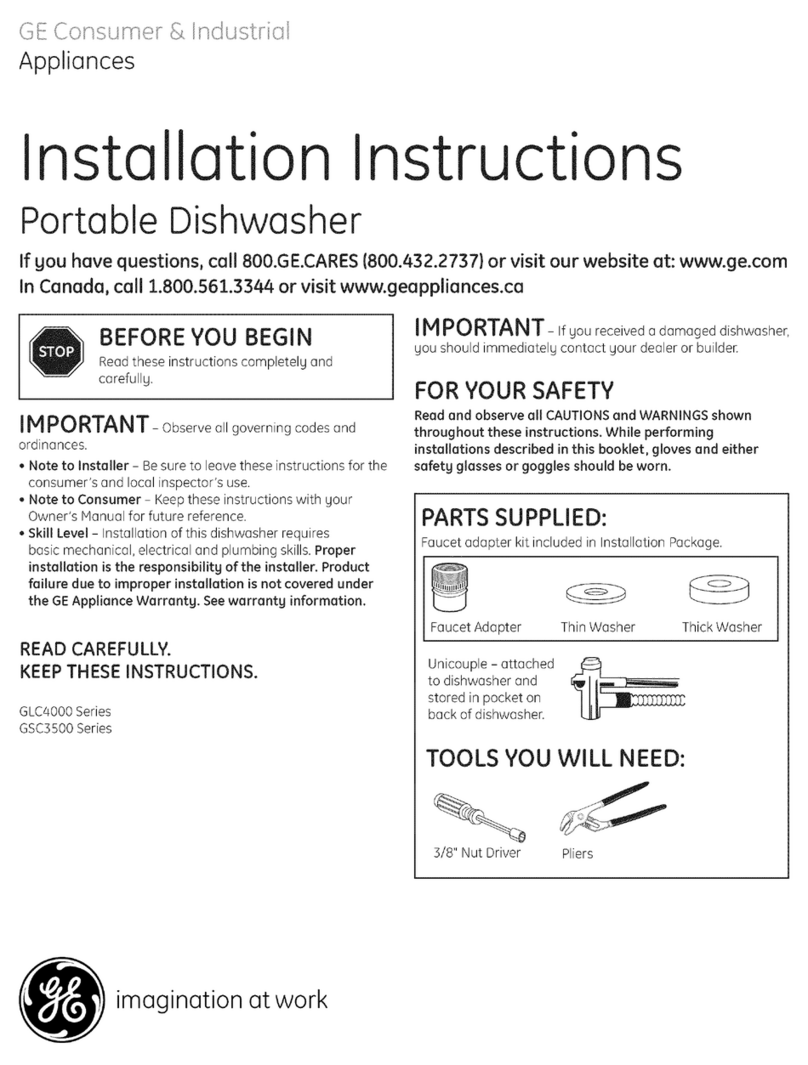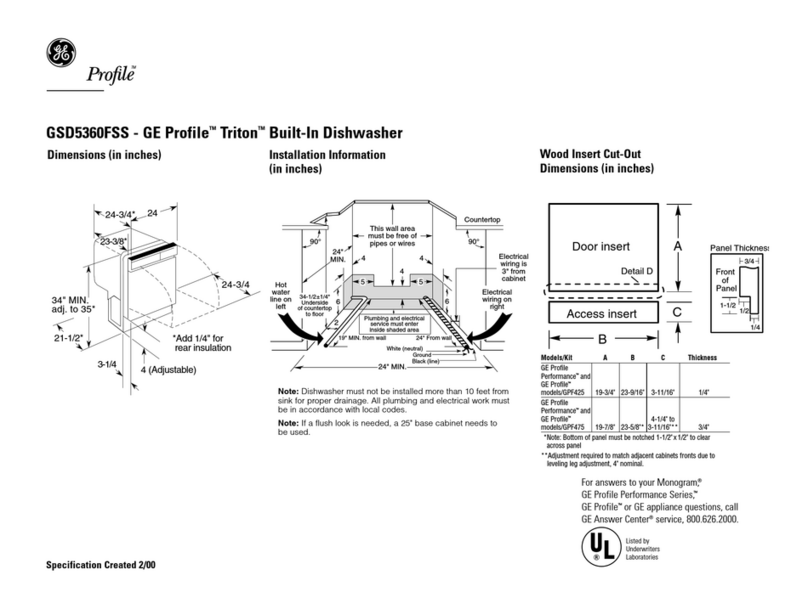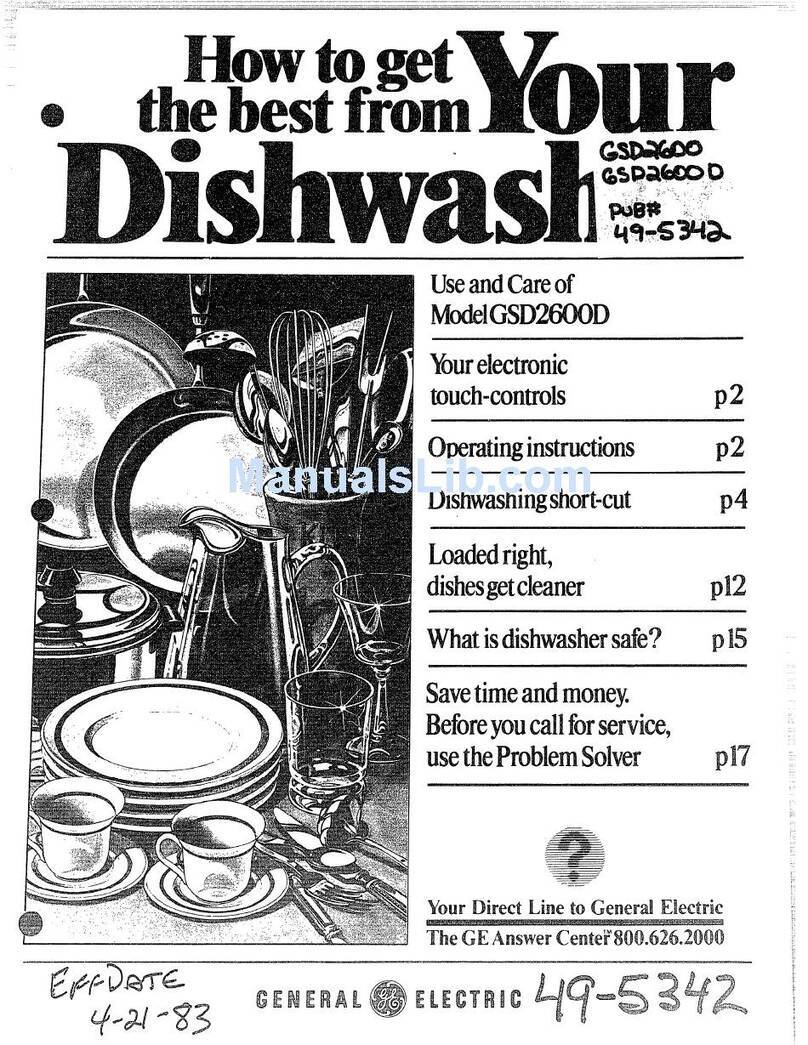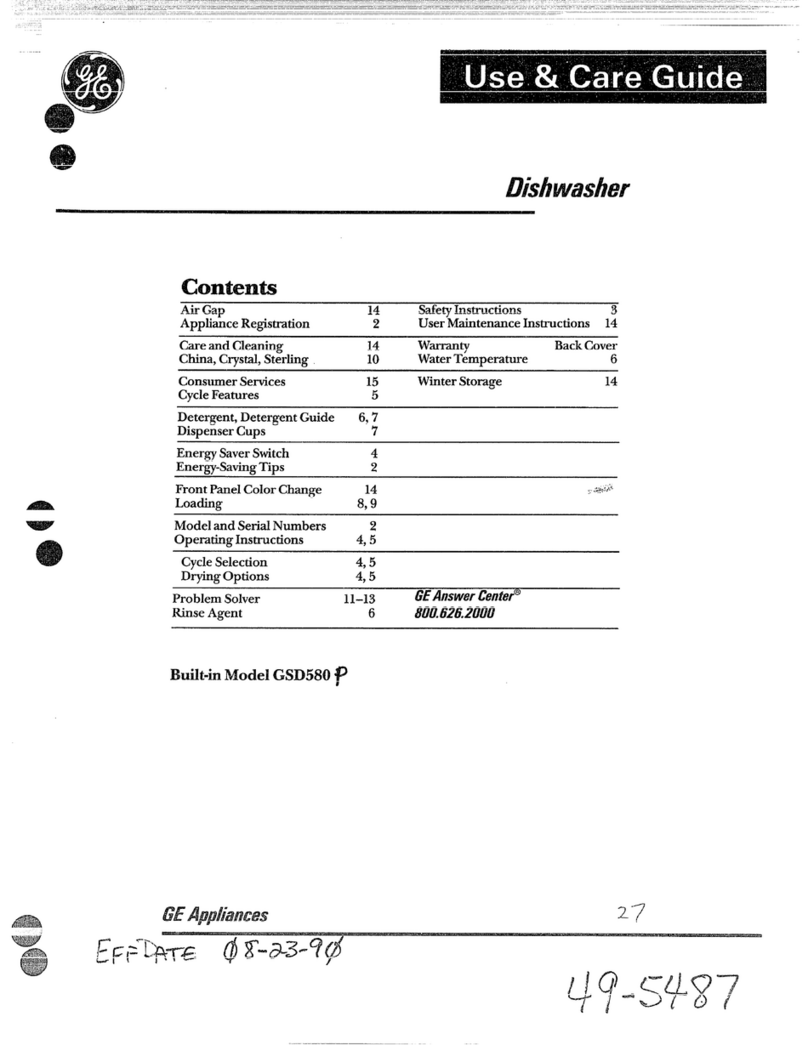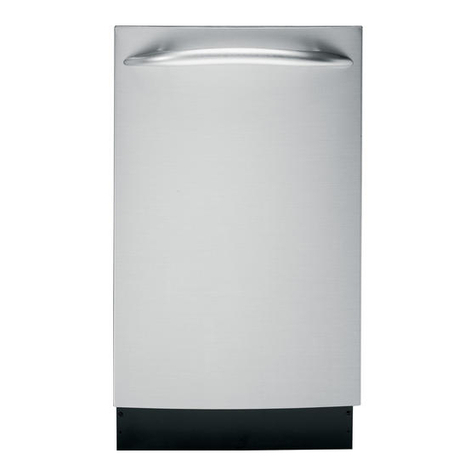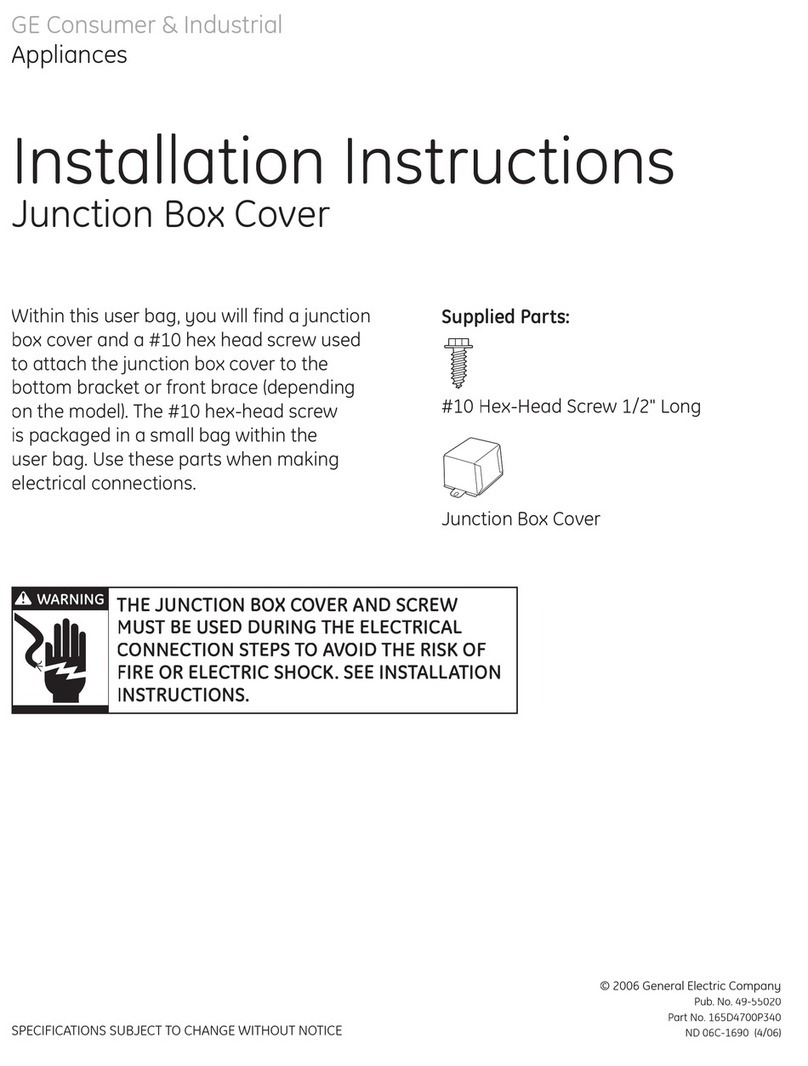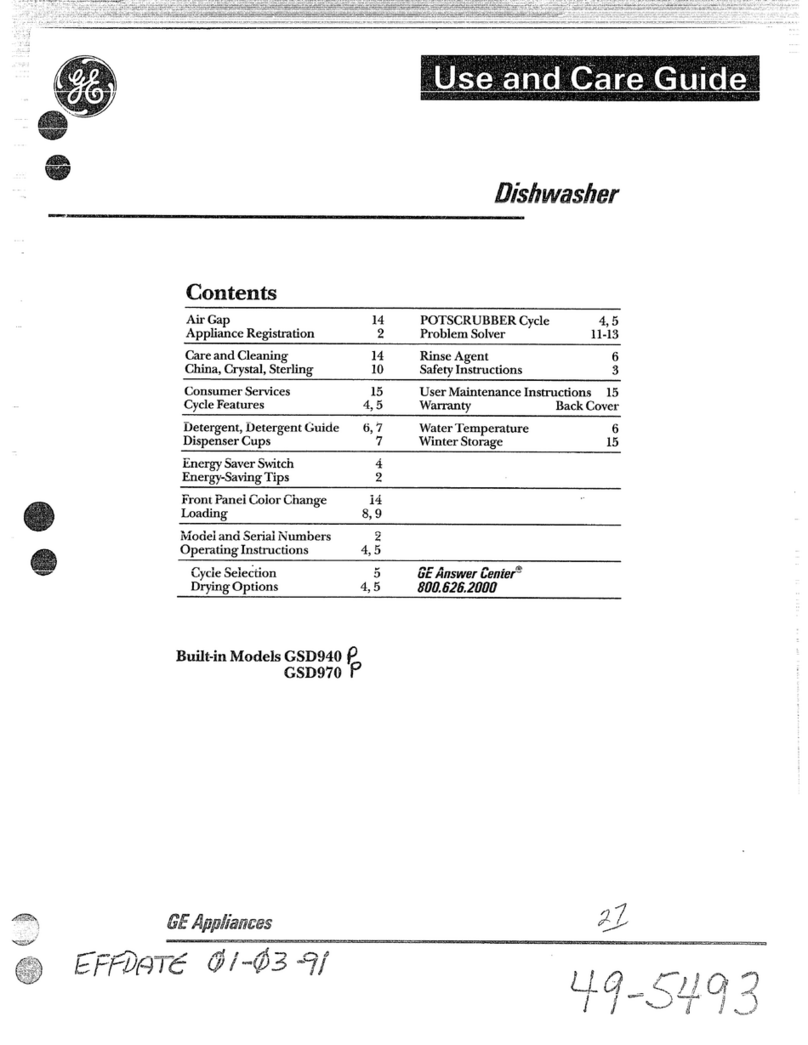4
IMPORTANT SAFETY INSTRUCTIONS
MESURES DE SÉCURITÉ IMPORTANTES
PROPER INSTALLATION AND MAINTENANCE
This dishwasher must be properly installed
and located in accordance with the Installation
Instructions before it is used. If you did not
receive an Installation Instructions sheet with
your dishwasher, you can receive one by visiting
our Website at GEAppliances.com
.
• Connect to a grounded metal, permanent
wiring system; or run an equipment-
grounding conductor with the circuit
conductors and connect to the equipment-
grounding terminal or lead of the appliance.
•Improper connection of the equipment-
grounding conductor can result in a risk
of electric shock. Check with a qualified
electrician or service representative if you are
in doubt whether the appliance is properly
grounded.
• Dispose of discarded appliances and shipping
or packing material properly.
• Do not attempt to repair or replace any part
of your dishwasher unless it is specifically
recommended in this manual. All other
servicing should be referred to a qualified
technician.
• To minimize the possibility of electric shock,
disconnect this appliance from the power
supply before attempting any maintenance.
NOTE: Turning the dishwasher off does not
disconnect the appliance from the power
supply. We recommend having a qualified
technician service your appliance.
INSTALLATION ET ENTRETIEN APPROPRIÉS
Avant de l’utiliser, vous devez installer
correctement ce lave-vaisselle conformément
aux directives d’installation fournies. Si vous
n’avez pas reçu une feuille de directives
d’installation avec votre lave-vaisselle, vous
pouvez en obtenir un exemplaire par visiter
notre site Web à l’adress geappliances.ca.
• Cet appareil doit être relié à un système
de câblage électrique permanent, mis à la
terre. Sinon, un fil de mise à la terre pour
appareillage doit être installé et raccordé à la
borne ou au fil de mise à la terre de l’appareil.
• Un raccordement non approprié du fil
de mise à la terre pour appareillage peut
présenter des risques de chocs électriques.
Si vous doutez de la qualité de la mise à la
terre de votre électroménager, consultez un
représentant du Service après-vente ou un
électricien qualifié.
• Jetez de la façon appropriée les vieux
électroménagers, ainsi que le matériel
d’emballage et d’expédition.
• Ne tentez pas de réparer ou de remplacer
toute pièce de votre lave-vaisselle, à moins que
cela ne soit spécifiquement recommandé dans
le présent manuel. Confiez toutes les autres
réparations à un réparateur qualifié.
• Afin de réduire les risques de chocs
électriques, débranchez toujours l’appareil
avant de le réparer. REMARQUE : Lorsque
vous mettez la commande du lave-vaisselle à
OFF (arrêt), le courant qui alimente l’appareil
n’est pas coupé. Nous vous recommandons de
confier la réparation de votre appareil à un
réparateur qualifié.
